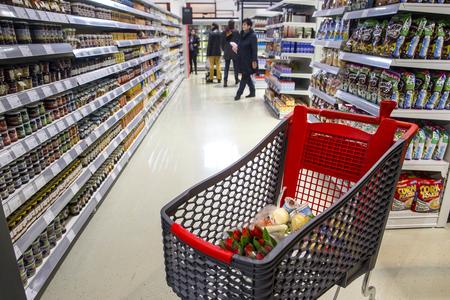Consumer inflation sped up in the past few months. After a relatively slow increase in April (2.3 percent year-on-year), the inflation rate amounted to 2.7 percent in total in May, with core inflation reaching 2.3 percent and net inflation 1.9 percent.
In monthly terms, consumer prices rose 0.3 percent in total, the data of the Slovak Statistics Office show.
“The acceleration in the May price increase was supported by higher prices of food and the quicker increase in demand inflation, also affected by a higher increase in accommodation prices,” wrote Ľubomír Koršňák in a memo. Koršňák is an analyst with UniCredit Bank Czech Republic and Slovakia.
Fuel prices rose more slowly
The prices of food increased 0.9 percent month-on-month, affected mostly by higher prices of meat, particularly pork (up by 2.3 percent m-o-m); sugar, jam, honey, syrups, chocolates and confectionary (by 1.8 percent m-o-m); food products n.e.c. (by 1.5 percent m-o-m); fish and fruit (by 1 percent m-o-m each); milk, cheese and eggs (by 0.7 percent m-o-m); vegetables including potatoes (by 0.2 percent m-o-m); and bread and cereals (by 0.1 percent m-o-m).
In annual terms, food prices rose from 2.9 percent to 3.9 percent.

Demand inflation rose by 0.2 percent m-o-m, and 2 percent y-o-y (up from 1.7 percent the previous month). This was mostly the result of the price increase in services supported by the wage increase, according to Koršňák.
At the same time, fuel prices rose, though at a slower pace than last year. While they increased 2.3 percent on average compared to April 2019, the annual growth tempo slowed down from 3 percent to only 1 percent. As a result the prices slightly slowed annual inflation, Koršňák pointed out.
Inflation expected to remain the same
As for the coming months, Koršňák expects inflation to oscillate around 2.5 percent. It will be impacted mostly by higher prices of food and services.
“On the other hand, fuel prices will negatively impact inflation since they already reached the top and the oil prices in global markets started to slightly decrease,” Koršňák wrote in a memo.
They may be higher only at the end of the year, although oil prices are expected to drop rather than increase.
As for demand inflation, it is expected to stabilise and slightly decrease at the turn of the years due to slower economic growth, according to the analyst.



 Meat, illustrative stock photo (source: TASR)
Meat, illustrative stock photo (source: TASR)